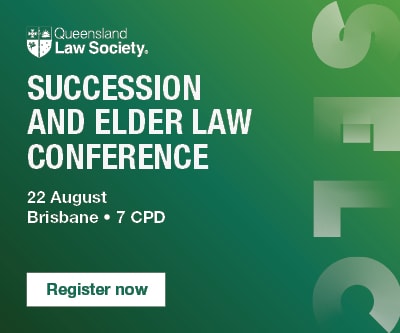Access to material that is confidential to another is a privileged position.
Where the access has been forced upon the third party by court process, it is accompanied by a strictly enforced obligation to use that material only for the purpose intended.
There is an ‘implied undertaking’ not to use documents or information disclosed by a party under compulsion for a purpose that is collateral to the proceedings1 without the leave of the Court.2 Breach of this “use and disclosure” restriction does not require bad faith or deliberate impropriety,3 simply use for any purpose other than the prosecution of the proceeding in which the document was given.4
Strictly speaking, the formulation of the obligation as an ‘implied undertaking’ is an anachronism arising from its historical roots.5 It is better characterised as a substantive obligation which binds a party without recourse to the law of undertakings.6 One of the more significant aspects of this distinction is that the obligation binds persons who are not legal practitioners.
Other than in the Family Court, the obligation ends once material is received into evidence.7
In Hearne v Street8 the majority (Hayne, Heydon and Crennan JJ) cast the obligation widely at [96]:
Where one party to litigation is compelled, either by reason of a rule of court, or by reason of a specific order of the court, or otherwise, to disclose documents or information, the party obtaining the disclosure cannot, without the leave of the court, use it for any purpose other than that for which it was given unless it is received into evidence. The types of material disclosed to which this principle applies include documents inspected after discovery, answers to interrogatories, documents produced on subpoena, documents produced for the purposes of taxation of costs, documents produced pursuant to a direction from an arbitrator, documents seized pursuant to an Anton Piller order, witness statements served pursuant to a judicial direction and affidavits.
The obligation may also apply at common law to material obtained in proceedings conducted outside traditional courts or tribunals,9 or may be express in the Court or Tribunal rules.10
What constitutes ‘collateral or ulterior’11 use, or use ‘for purposes other than the conduct of the legal proceedings’ is not settled.12 In Hearne, the Court noted that the obligation is binding upon third parties such as counsel, expert witnesses and the officers of a litigant. By implication, disclosure to these classes of persons does not offend the rule. The majority also noted that litigation funders who come into possession of the documents are bound by the restraint – again without adding the caveat that disclosure to such a funder would be a violation to begin with.13
The party in possession of documents need not be aware that collateral use is a violation of their obligation to the Court, provided they know the source of the documents.14
Clients and consultants should be given specific advice concerning the obligation prior to furnishing them with affected material. In Legal Services Commission v Cochrane,15 a solicitor who acted without understanding his obligations with respect to the material was found to have engaged in unsatisfactory professional conduct.
Copies and scans should be clearly watermarked with an appropriate endorsement to minimise the chances of mistakes.
The obligation is to the Court and can not necessarily be waived by the original owner of the document or information.16 An application for leave to use the confidential material should generally be made to the Court in which the original proceeding was conducted.17
1 Harman v Secretary of State for the Home Department [1983] 1 AC 280 (‘Harman’).
2 Central Queensland Cement Pty Ltd v Hardy [1989] 2 Qd R 509.
3 Jones v Purnell Motors Pty Ltd [2012] NSW DC 235, [6] (Gibson DCJ).
4 Bell Group Ltd (in liq) v Westpac Banking Corp (1998) 86 FCR 215, 220: use of discovered materials by liquidator seeking to conduct examinations.
6 See Hearne v Street [2008] HCA 36, [3] (Gleeson CJ) and [102] (Hayne, Heydon and Crennan JJ) (‘Hearne’)..
7 See Family Law Rules 2004 (Cth) (pre action procedures – Schedule 1, Part 1 Financial cases and Part 2 Parenting cases).
8 Hearne (n 6); See also Central Queensland Cement Pty Ltd v Hardy [1989] 2 Qd R 509; Ainsworth v Hanrahan (1991) 25 NSWLR 155; Spillane v Curr [2011] NSWDC 150; Oswal v Burrup Holdings Ltd (no 2) [2012] FCA 1187, [92] (Barker J).
9 For example, documents produced under a disclosure order from an arbitrator: Esso Australia Resources Ltd & Ors v Hon Sidney James Plowman (Minister for Energy & Minerals) [1995] HCA 19 citing Dolling-Baker v Merrett [1990] 1 WLR 1205 with approval.
10 It is also worth noting Rule 28.1 of the Australian Solicitors Conduct Rules 2012 (Qld) which prohibits publication of material concerning current proceedings which may prejudice the trial or administration of justice.
11 British American Tobacco Australia Services Ltd v Cowell (2003) 8 VR 571, [20].
12 See Tony Howe, Implied undertakings in litigation (14 September 2005) footnote 9 <http://www.ags.gov.au/publications/legal-briefing/br75.htm>.
13 Hearne (n 6) [109] (Hayne, Heydon and Crennan JJ).
14 Ibid [57], [111], [112]; Hamersley Iron Pty Ltd v Lovell [1998] WASCA 133, [109] (Anderson J) (Pidgeon & IPP JJ concurring); Watkins v AJ Wright (Electrical) Ltd [1996] 3 All ER 31, [107] (Blackburne J).
15 Legal Services Commissioner v Cochrane [2008] LPT 18, in aggregation with other charges the overall finding was one of professional misconduct.
16 Spillane v Curr [2011] NSWDC 150, [33].
17 cf Holpitt Pty Ltd v Varimu Pty Ltd (1991) 103 ALR 684; McCabe v British American Tobacco Australia Services Ltd (No. 3) [2002] VSC 150.


